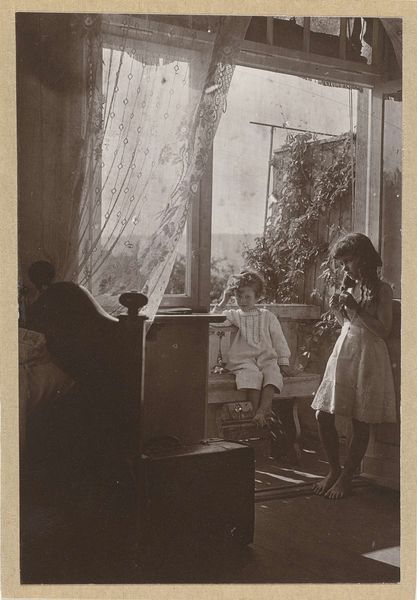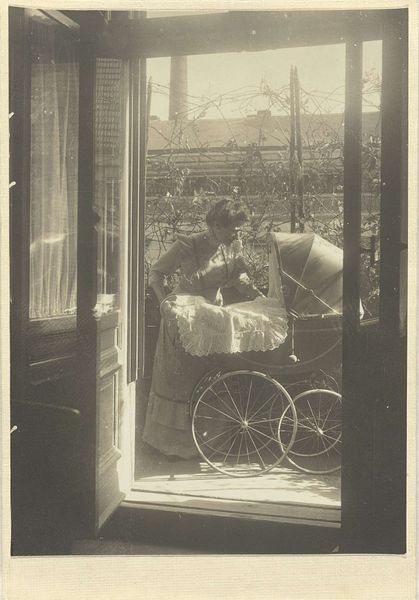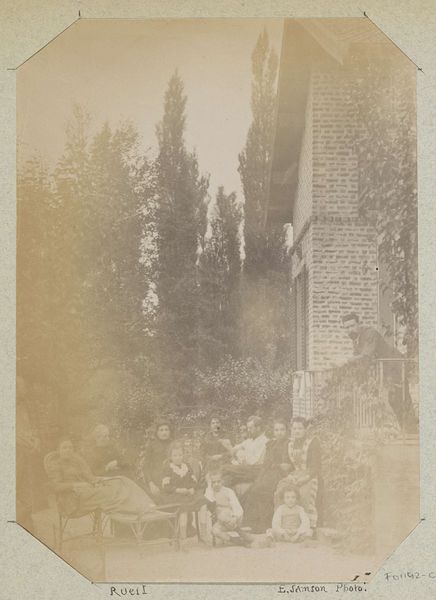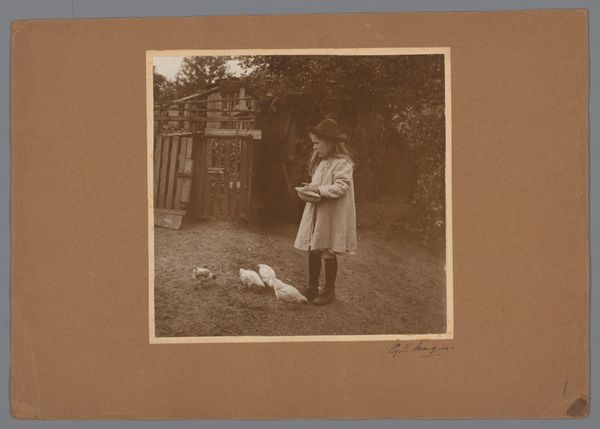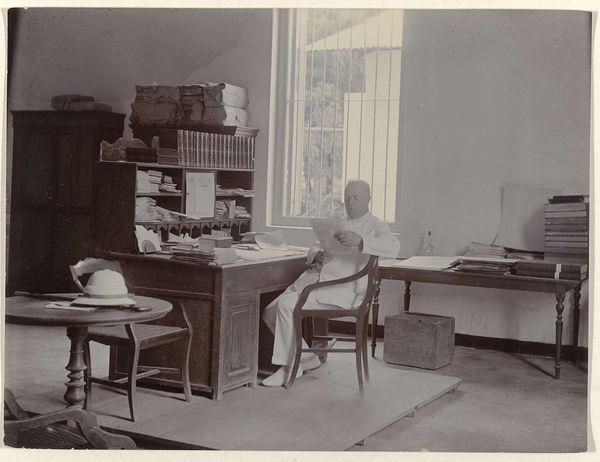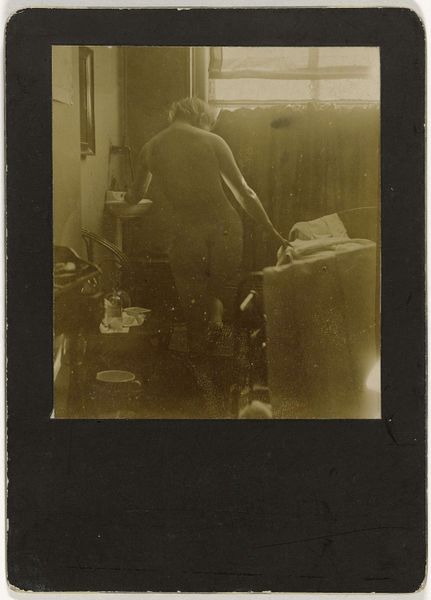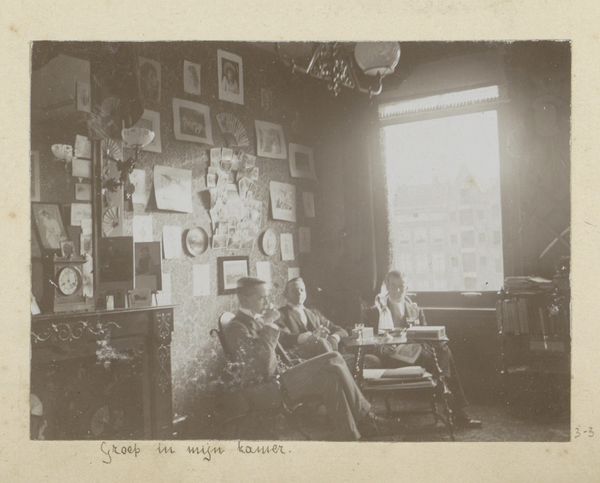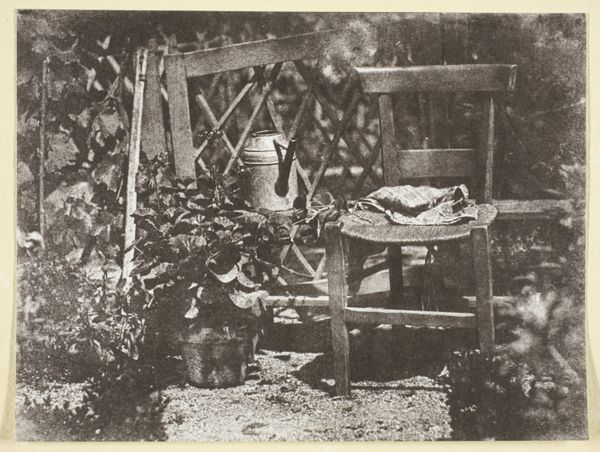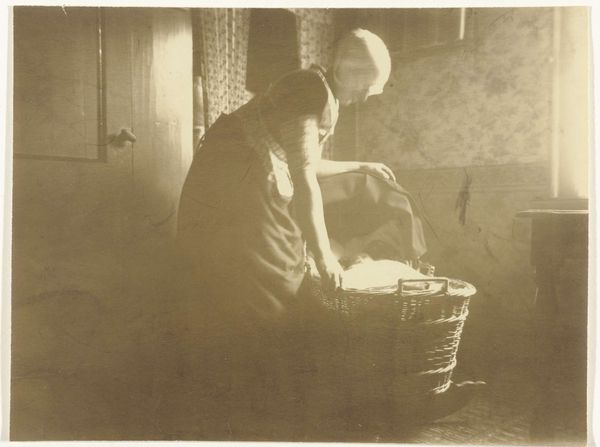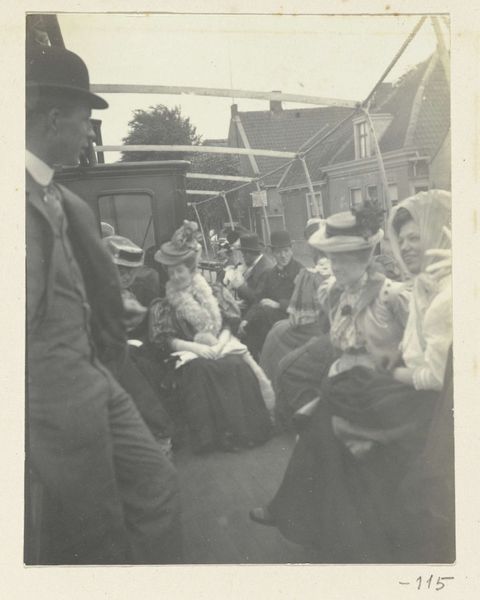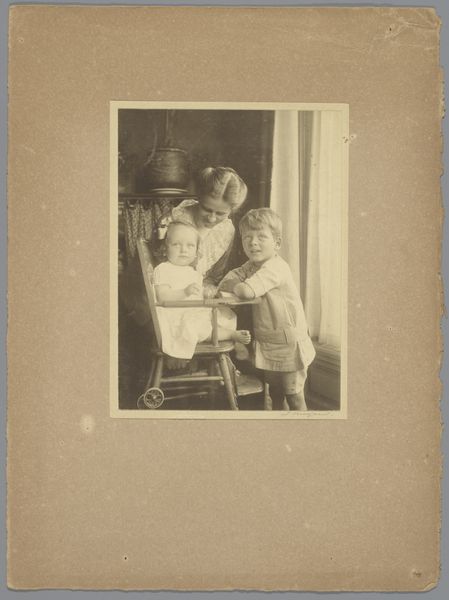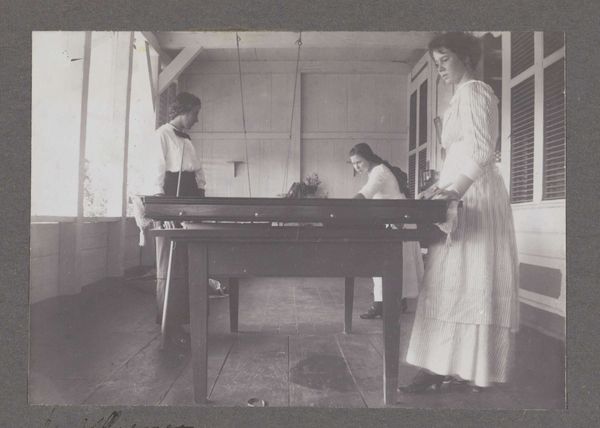
Marba en Eckart Titzenthaler, kinderen van de fotograaf, op een balkon 1918 - 1919
0:00
0:00
Dimensions: height 108 mm, width 82 mm, height 114 mm, width 87 mm
Copyright: Rijks Museum: Open Domain
This photograph shows Waldemar Titzenthaler’s children on a balcony, captured with a camera and darkroom techniques that were cutting-edge at the time. Photography, though now commonplace, was once a complex, labor-intensive craft. The sepia tone here is characteristic of early photographic processes, where the image is created through chemical reactions on paper. The very act of capturing this scene – the exposure time, the developing process – required both technical skill and artistic vision. Consider the materiality of this image: the paper it’s printed on, the chemicals used to develop it, and the mechanical precision of the camera. These elements remind us that photography isn't just about recording reality; it's about shaping it through technology and skill. Titzenthaler wasn't just taking a snapshot; he was engaging with the industrialization of image-making, a shift that democratized portraiture but also transformed it into a commodity. Looking closely at the photograph as an object, we can better understand its historical and cultural significance, going beyond the surface to appreciate the depth of its creation.
Comments
No comments
Be the first to comment and join the conversation on the ultimate creative platform.
